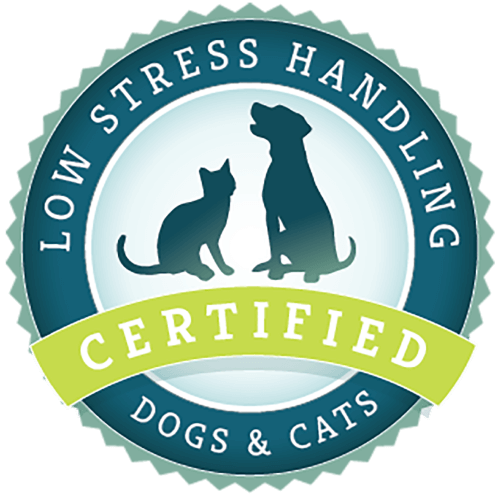What article are you looking for?
Category: CattleDog Publishing Newsletter
Low Stress Vet and Tech Communication
In most small animal practices, the intake is done by the technician. Weight check, temp, heart rate, and history are performed by the veterinary technician. With the advances of Low Stress Handling® skills, there may be some variation on how intensive the technician will be in gathering these vital signs prior to the veterinarian stepping into the room. There is acknowledgement of the stress level of the patient, so the technician may forego some of the intake exam to reduce stress and allow the veterinarian to triage care. I always felt it was all fun and games until the doctor
“What Did You Say?” – What Your Body Language Says To Your Pet
Train yourself first, in learning what your body language is communicating to your pets and also what their body language is telling you. This is truly one of the most important things that you can do for your pet.
Storm Sangria – A Calming Cocktail for Your Storm Fearful Dog
It is April, and thunderstorms are upon us here in the Midwest. Many dogs are fearful of thunderstorms. It is the most common subtype of noise phobias in dogs. The behavioral response may vary from mild pacing or panting up to escape behaviors such as digging repetitively at the door, trembling severely, or injuring teeth and nails to get out of confinement. Triggers for the fear include falling barometric pressure, wind, rain, cloud cover, and thunder (1) Many of these triggers are present hours before the storm develops. When the thunder and lightening occur, often the dog escalates into full
Leash Walking Tips: Giving Correct Cues for Stopping
Have you ever been in a new city or location or situation and uncertain of where to go and the person who’s supposed to be guiding you keeps getting you mixed up? “This way,” they say as they walk forward slowly but while scanning the signs to the right and left. And then, “Wait no… this way.” And then, “Oops. I meant the other way instead.” If you have, I’m sure you remember the stress and frustration. Now ask yourself, do the dogs I walk at the veterinary hospital or shelter get mixed signals, too? Am I conveying an air
Why Can’t We All Just Get Along? Help for the Multi-cat Household
Africanwildcat2-Blog Today’s domestic cat looks quite similar to its ancestor, the African wildcat. In many ways, our pet cats today are not that different from their wild ancestor, the African wildcat. They even look similar. According to Wild Cats Magazine, the African wildcat is mostly nocturnal, hides during the day, tries to intimidate opponents by making itself look larger, and females defend their territory against intruders. Sound familiar? African wildcats, as well as feral cats, are solitary hunters. This makes perfect sense if you think about it: Their prey might include mice, birds, even insects. Not really enough food to invite
CattleDog Publishing Quarterly (magazine) – August 2018
And Just Like That, Our Newsletter Has Become A Magazine!!! We are very excited to present to you the first issue of our brand new digital magazine.We have a lot of wonderful things planned for the CattleDog Publishing Quarterly magazine, not the least of which is all of the wonderful information and resources that are contained in every issue. Starting with our November 2018 issue, we are also hoping to include articles written by guest writers and other industry leaders just like you. In time, we are also considering the possibility of creating a “print” version of the publication to

Low Stress Handling® Silver-Level Certification
Individual Certification at this level demonstrates to clients and employers the individual’s dedicated interest in Low Stress Handling®. Hospital Certification at this level demonstrates to clients and staff the hospital’s commitment to appropriately training staff in Low Stress Handling® methods.
Learn More
